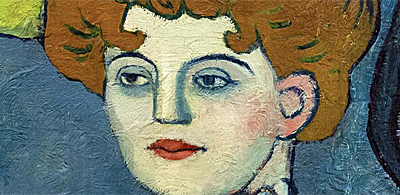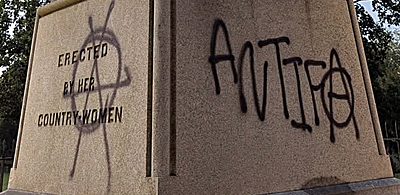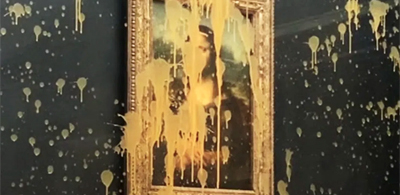Eco-Vandals Attack Picasso Painting
On June 19, 2025, three members of the eco-extremist group known as Last Generation Canada (Dernière Génération Canada), vandalized an oil painting by Pablo Picasso on exhibition at the Montreal Museum of Fine Arts in Canada. The radical group identified their vandal as Marcel—age 21.
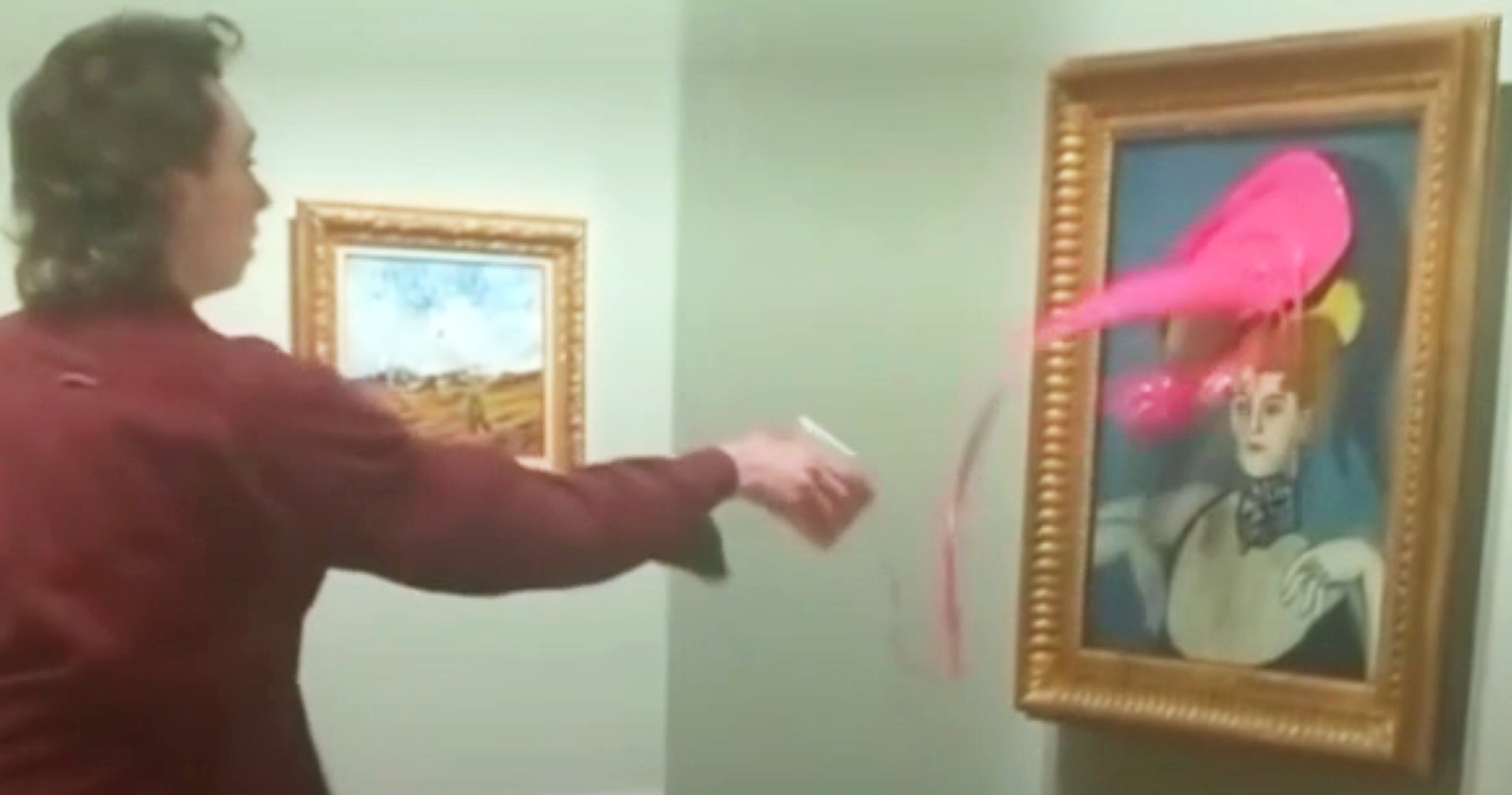
Sometime around 10:30 am, the three extremists entered an exhibit hall where Picasso’s 1901 oil on canvas painting L’Hétaire. Courtisane au collier was on display. “Marcel” hurled bright pink paint on the framed canvas while his two accomplices filmed the act for propaganda purposes.
After vandalizing the painting Marcel harangued those in the gallery with the usual mad-hatter screed about the world coming to an end because we use fossil fuel. Evidently Last Generation believes “climate collapse” will be halted if we damage and destroy enough priceless historic artworks. Marcel explained this to the shocked crowd with the following squirrely oratory:
“We value paint strokes and color composition over life itself. A lot more resources have been put in place to secure and protect this artwork than to protect living, breathing people. So, what do the elite actually value? We are now facing a dilemma: to protect art made by long dead artists for no one to see, or to protect the new and future artistic geniuses for their works to be seen by our children and grandchildren. Art only flourishes when people live, not when they survive.”
Oh yes, quite profound. Only a moron would accuse a museum of valuing “paint strokes” over “life itself.” And how is safeguarding “art made by long dead artists” a dilemma? Isn’t preserving art the historic role of museums? Marcel the delinquent is trying to justify the erasure of history. It seems Last Generation is only capable of convincing people their group wants the destruction of Western Civilization!
Video: Last Generation
Stéphane Aquin, director of the Montreal Museum of Fine Arts, said he was “deeply dismayed” by the reckless act. Aquin said in a statement:
“It is most unfortunate that this act carried out in the name of environmental activism targeted a work belonging to our global cultural heritage and under safekeeping for the benefit of future generations.”
Aquin added an aside, “Museums and artists alike are allies in the fight for a better world.” Aquin’s comment stretches reality a bit. While I believe art makes the world a better place, there are some obligatory prerequisites. For example, this “Marcel” character claims to be an artist. There are many words I could use to describe him… “artist” is not one of them.
Fortunately Picasso’s L’Hétaire was protected by a pane of safety-glass. But I’m left pondering, given the destructive record of so-called ecologists like Dernière Génération and their continuing war on art, why wasn’t the Montreal Museum of Fine Arts more prepared for this type of attack?
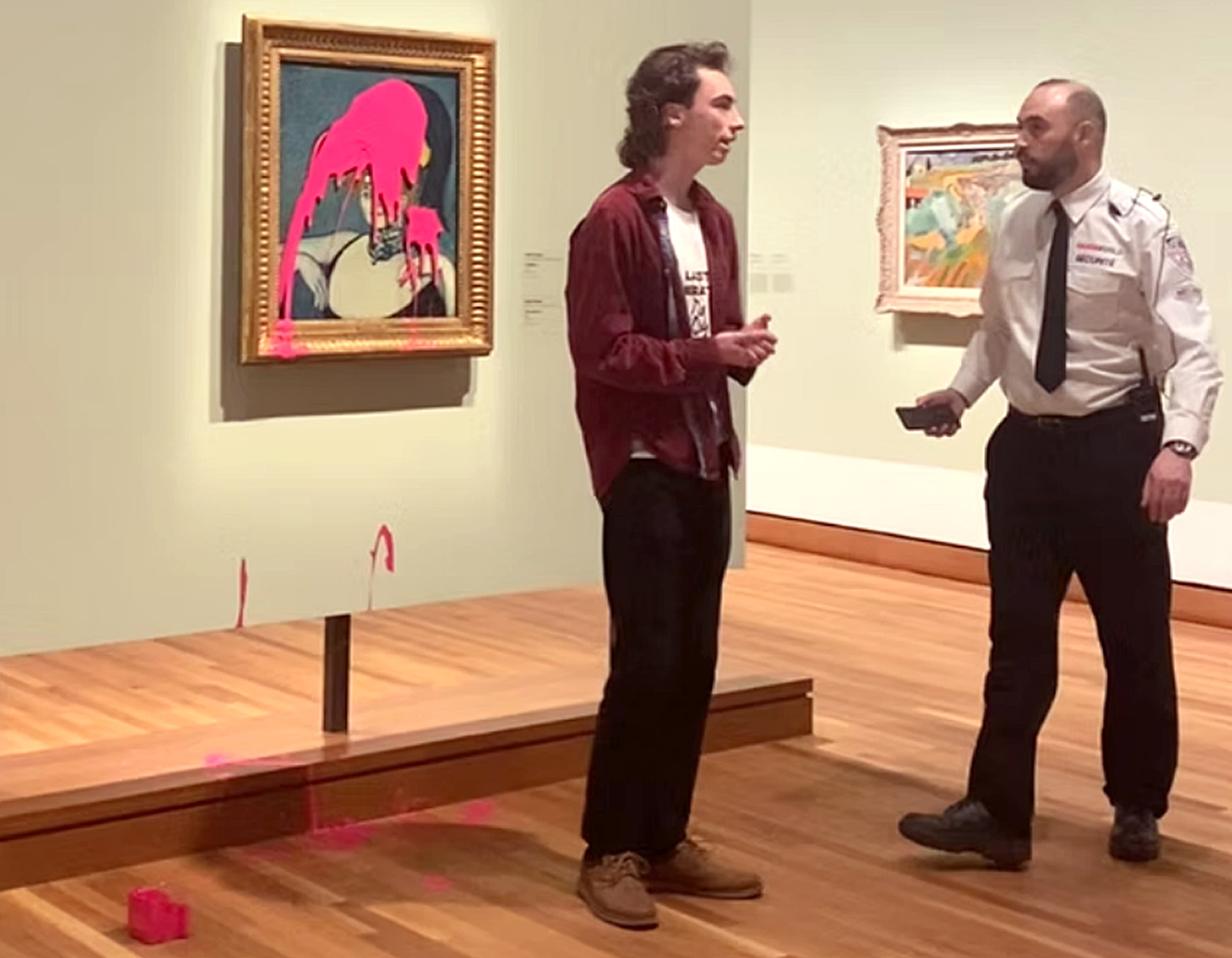
A museum security officer gently guided Marcel out of the gallery after the young man committed the vandalism, but the troublemaker wasn’t finished speechifying, so he stopped at the exhibit hall door to complete his tirade. A second museum security officer arrived, and Marcel could be heard berating the bewildered officers, saying:
“The painting crossed the entire Atlantic, it came from Italy, Italy which is burning, and we brought it here to Canada, which is also on fire! It’s ridiculous, it’s abnormal!”
Last Generation cadre believe the recent 2024 wildfires in Italy and Canada had “climate collapse” as their causation. Indeed in their eyes, every wildfire is started not by natural causes, but by climate change.
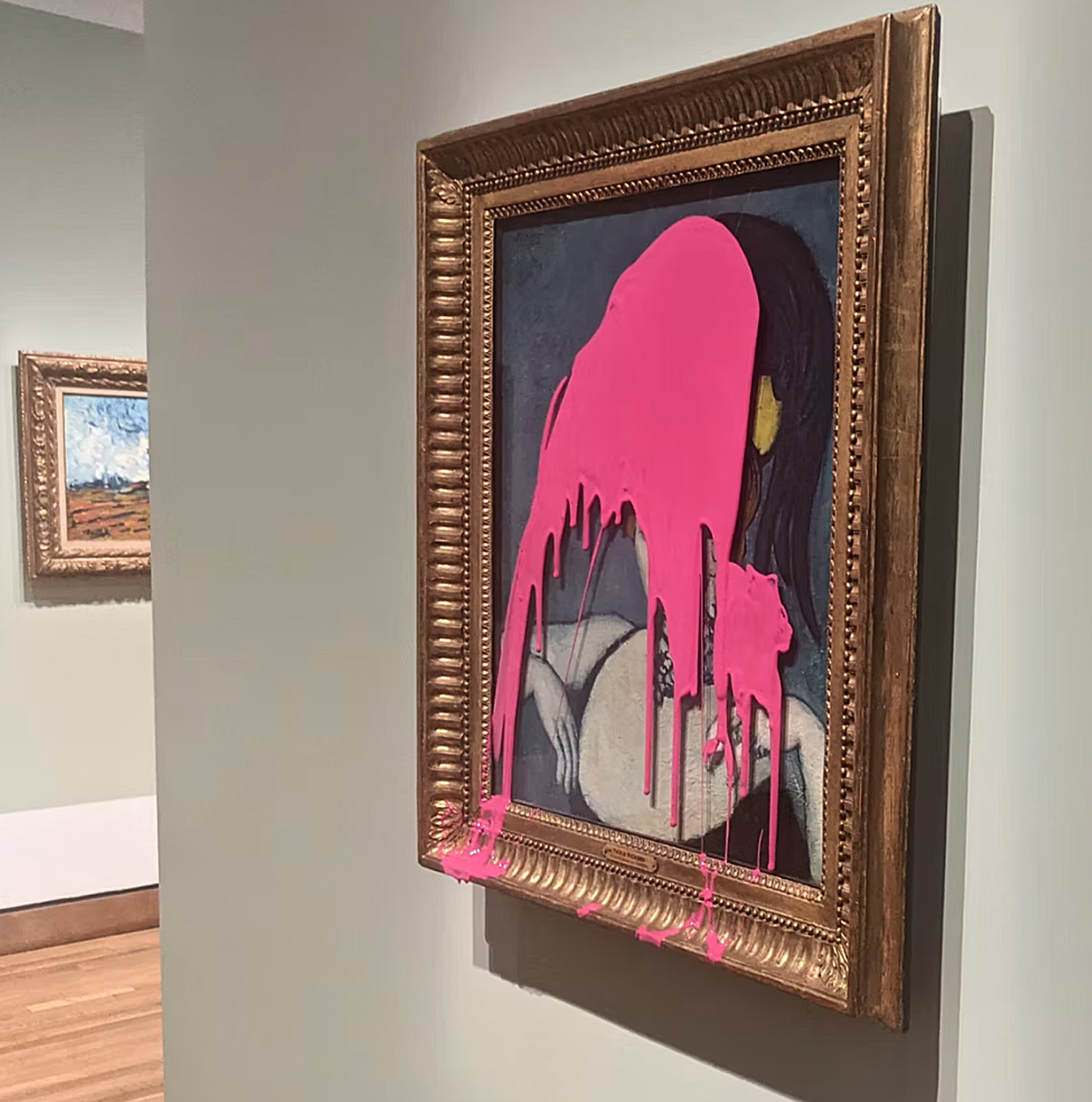
The three eco-vandals were detained by museum security, and when the Montreal police arrived, they were handed over to the police. Marcel was arrested for “mischief” and released. The police scheduled him to appear in court on a future date. Marcel’s cohorts were briefly held, but set free.
People might ask “what does ‘L’Hétaire’ mean?” In ancient Greece a hetaira was a beautiful, educated, cultured prostitute, who could discuss philosophy as well as politics, play an instrument, recite poetry, and also be an artist or entertainer. Prostitution was legal in ancient Greece, but the hetaira were in another class. Highly respected, they always accompanied powerful men, not just as lovers, but oftentimes as advisors. Some hetaira became wealthy beyond belief.
The first life-sized, nude female marble statue created in world history came from ancient Greece, and was created by the sculptor Praxiteles. The sculpture depicted the goddess Aphrodite, and was titled The Aphrodite of Knidos. For a model Praxiteles used a hetaira named Phryne.
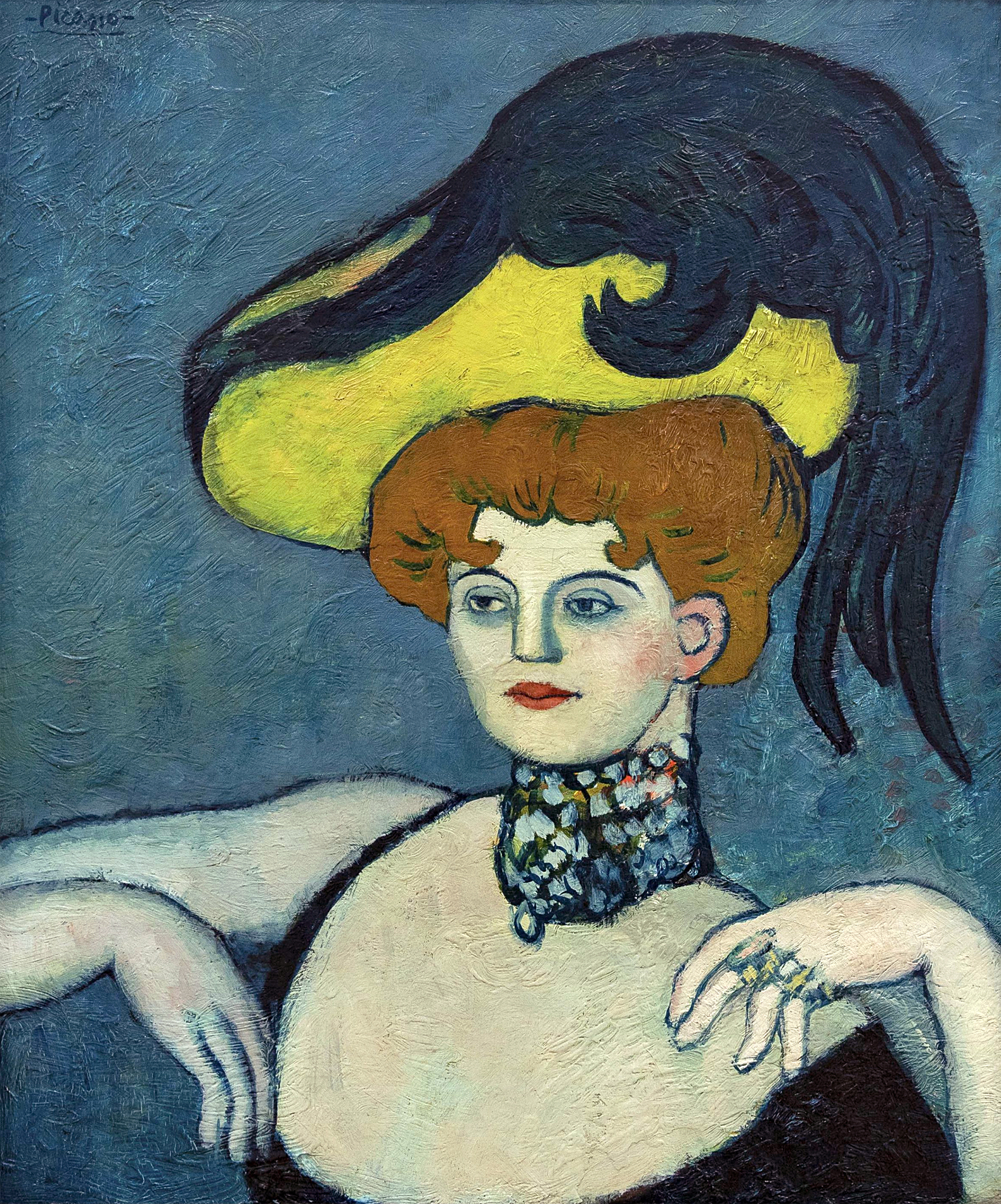
The woman depicted by Picasso in his L’Hétaire was likely found in a Parisian club frequented by bohemian petty bourgeois types. Picasso gave a tip of the hat to the cultured prostitutes of ancient Greece by titling his canvas L’Hétaire. But then, Picasso was known for his impish humor.
The Museum of Fine Arts in Canada included Picasso’s L’Hétaire in a special traveling exhibition they hosted titled: Berthe Weill, Art Dealer of the Parisian Avant-garde. The exhibition’s focus is the French art dealer and gallerist Berthe Weill (pronounced “vay”), who gained fame as someone who helped shape French modernist painting. The exhibit will be on view in New York, USA; Montreal, Canada; and Paris, France.
Starting in 1901, relatively unknown artists exhibited in Galerie B. Weill, the exhibit space Weill started in Paris. Exhibiting artists included Pablo Picasso, Henri Matisse, Fernand Léger, Raoul Dufy, Marc Chagall, Amedeo Modigliani, and many others. Even Mexican Muralist Diego Rivera exhibited there, his first solo show in France was held at Weill’s gallery. Weill organized some 400 art exhibits during her gallery’s existence—a third of those were exhibits of works by female artists like Suzanne Valadon and Émilie Charmy.
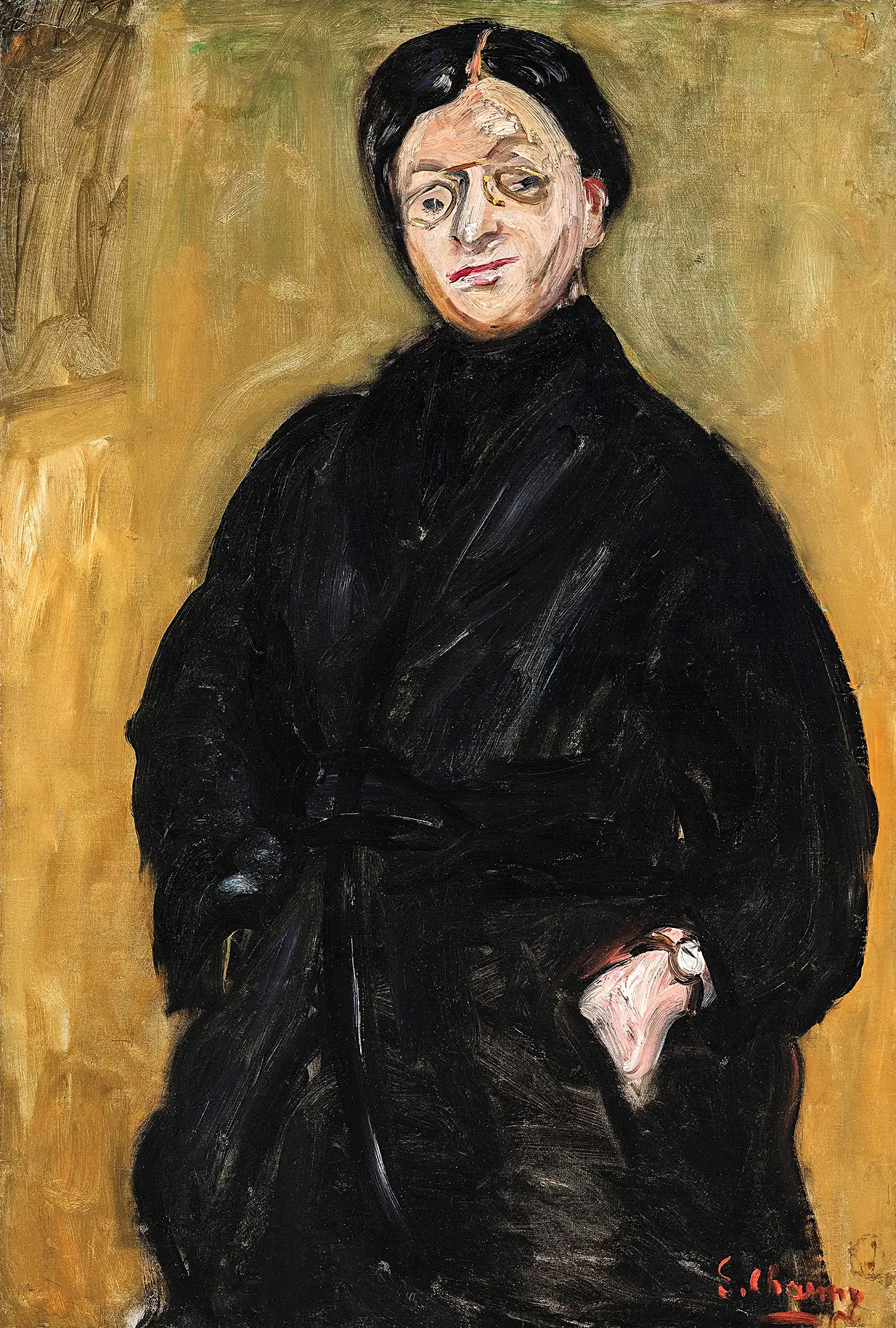
From 1901 to 1941, Berthe Weill (1865-1951) operated four different art galleries in Paris under the name, Galerie B. Weill. Her last was located on the Left Bank. Hitler’s Nazi army marched into Paris on June 14, 1940, and all of France, including the Weill gallery, became imperiled. Weill was born into a Jewish family, and in occupied Paris the Nazis were starting to force Jews to wear the yellow Star of David patch, marking them enemies of the Nazi regime.
Weill shuttered her gallery in 1941. In 1942 the Nazis began rounding up thousands of Jews in Paris. They were loaded onto trains, transported to Auschwitz concentration camp in Nazi occupied Poland, and annihilated. Miraculously Weill avoided deportation by the Nazis. After the war she was impoverished and fell into poor health. Berthe Weill remained forgotten and poverty-stricken until in 1951, she died in Paris at the age of 86.
Picasso’s L’Hétaire was on loan to the Museum of Fine Arts in Canada when it was attacked by Last Generation Canada. It was loaned out by the Pinacoteca Agnelli (Agnelli Art Gallery) in Turin, Italy, which has the painting in its collection. I’m certain the Agnelli was dismayed when they got the news of the defacement. How can museums be expected to loan priceless works of art, when radical leftists continue to damage or destroy historic artworks as a form of “protest”?
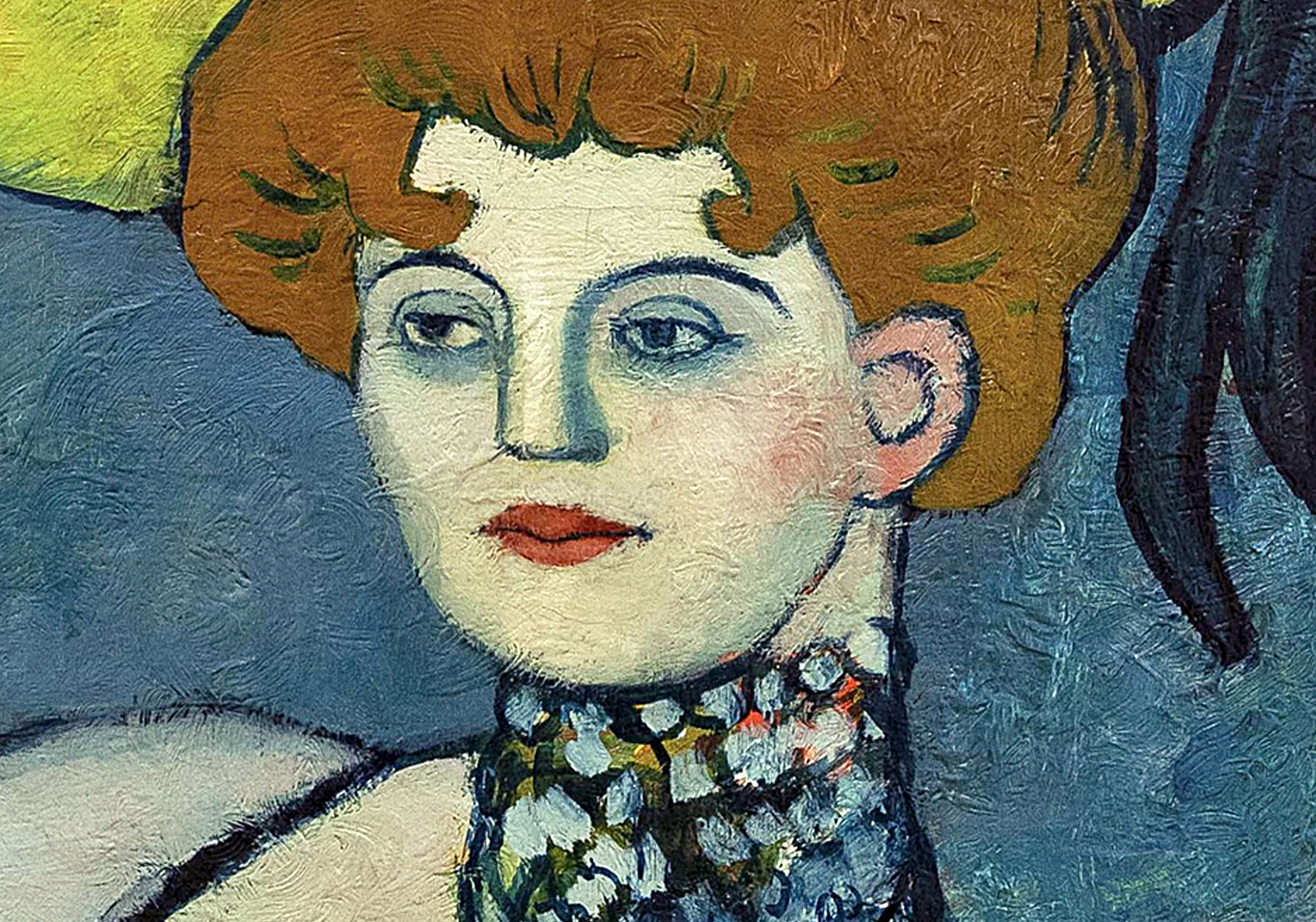
In the words of the Pinacoteca Agnelli, Picasso’s L’Hétaire painting was created in “the fin de siècle style,” a French phrase meaning “end of century.” The term also alludes to a culture marked by fashionable despair, pessimism, overstimulation, escapism, world-weariness, and anxiety about the future.. does this not describe our present?
Pablo Picasso first visited Paris when he was 19-years-old, he would paint L’Hétaire in 1901. The oil painting was part of his early “Blue Period” when he created somber, realistic paintings in monochromatic hues of blue. He once said of these paintings: “The Blue Period was not a question of light and color. It was an inner necessity to paint like that.”
On a personal note. When I was a child my mother decorated our family’s humble working class apartment in Los Angeles with art reproductions. I recall copies of paintings made by Edgar Degas, Pierre-Auguste Renoir, Vincent van Gogh, Toulouse-Lautrec, and Picasso. Interestingly enough the Picasso prints hanging in our house were from his Blue Period, those were not happy artworks. He painted society’s outcasts, the fallen and marginalized ones.
One of the Picasso prints in my home was a copy of his solemn 1903 oil on canvas painting titled, The Tragedy. It depicts three destitute forlorn figures standing barefoot on a beach. One presumes they are a family, but the viewer knows nothing about them or the calamity that struck them. It is simply a portrait of despondency and human sadness.
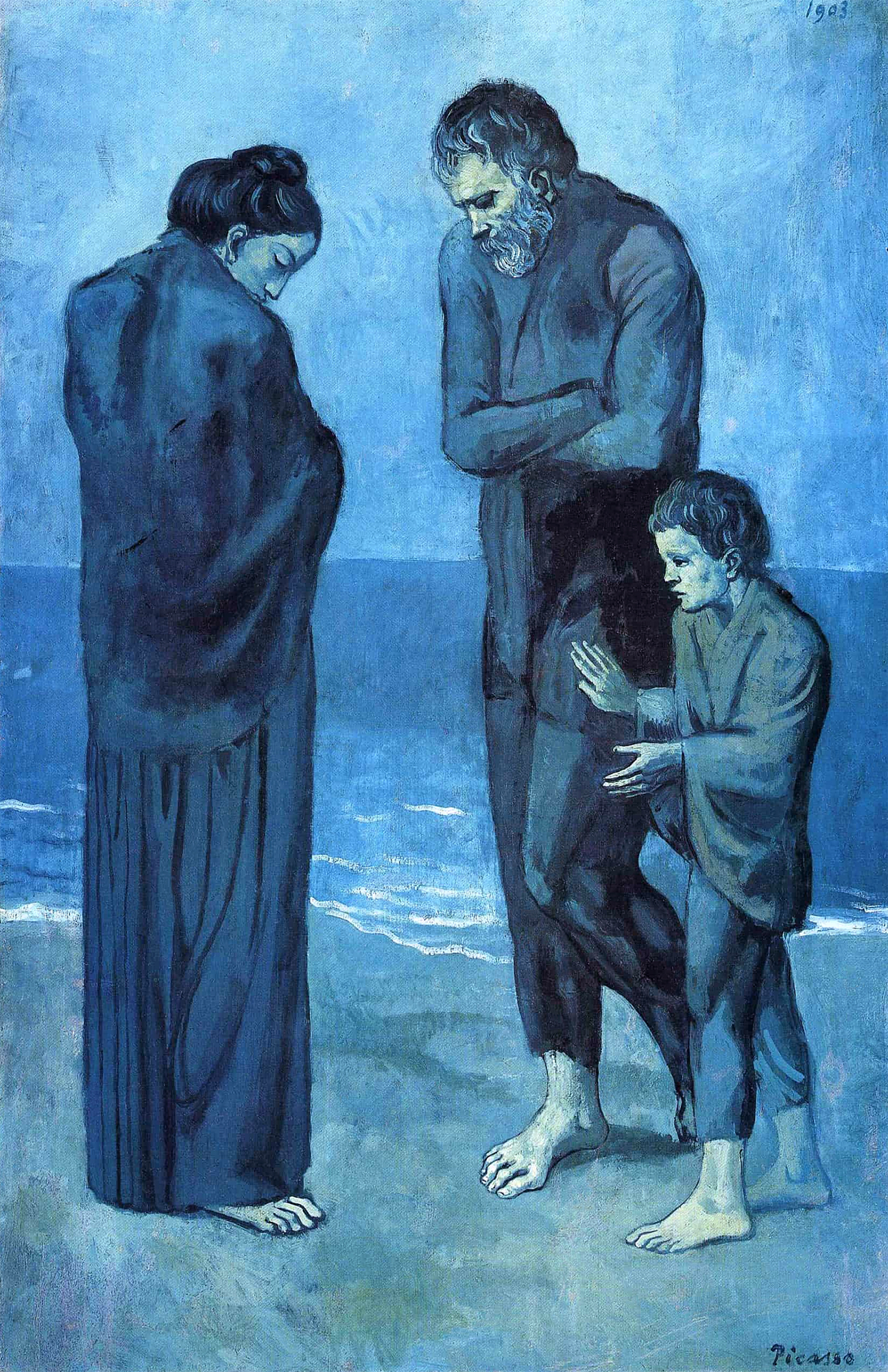
Most people know Picasso for his non-figurative, cubist and abstractionist portraits and scenes. But I credit his realist works from the Blue Period, The Tragedy in particular… with sparking my interest in critical realist visual art, a genre I long ago fully embraced as an artist.
I condemn the nihilistic act of vandalism Last Generation Canada committed against the Montreal Museum of Fine Arts. But the eco-extremist group did more than hurl paint on “our global cultural heritage.” The real crime committed was blotting out Western History.
Last Generation exploited Picasso’s L’Hétaire as a backdrop for their propaganda. In doing so they imploded the histories surrounding the painting. Everything in this essay, Picasso and his Blue Period paintings; the hetaira of ancient Greece and the goddess Aphrodite; the gallerist Berthe Weill and French modernist painting; the Nazis sending Parisian Jews to Auschwitz, even the mission of museums—it was all collapsed into a tunnel vision view that extolled vandalism and obscured history.
The mainstream news that bothered to report the assault on the Montreal Museum of Fine Arts, referred to the ne’er-do-wells as “climate activists” rather than vandals. Apologetics were offered to the extremists. They were “drawing attention to the dangerous wildfires spreading through Canada.” They belonged to “an environmental organization that works to combat climate change.” Really? Let’s examine their “work.”
In 2023 Last Generation in Germany destroyed publicly displayed Christmas trees all across Germany to stop “climate collapse.” They attacked the monument to the German constitution outside of Germany’s parliament in Berlin, pouring buckets full of thick black sludge all over the public artwork. Also in 2023 Last Generation in Italy poured charcoal dust into the Trevi Fountain in Rome, turning the fountain black!
In 2022 Last Generation hurled buckets full of pink, blue, green, yellow, and red paint all across the facade of the historic La Scala Opera House in Milan, Italy. That same year, while throwing paint filled balloons on the museum floor, they dumped 17 pounds of flour on a BMW hand-painted by Andy Warhol on display at the “Factory of Steam” art center in Milan. The powdery white flour covering the interior of the art center forced the closing of the exhibit: Andy Warhol: The Advertising of Form.
Last Generation has been extremely busy with their work. I could list more of their accomplishments… but I think you “get the picture.”
— // —
In closing, a quick reminder. Last Generation Canada didn’t stop the Berthe Weill exhibit. At the time of this post it’s still open to the public. For those who can’t attend there’s an excellent exhibition book available—Berthe Weill, Art Dealer of the Parisian Avant-garde.
Berthe Weill also wrote an autobiographical book titled, Pow! Right in the eye! It was translated into English in 2022. The book details her role in the rise of modern French painting. Pow! is available for purchase online.
The exhibit Berthe Weill, Art Dealer of the Parisian Avant-garde, was first shown at the Grey Art Museum at New York University (Oct. 1, 2024 to March 1, 2025). It travelled to the Montreal Museum of Fine Arts in Canada (May 10 to Sept 7, 2025). Its final showing is at the Musée de l’Orangerie in Paris (Oct 8, 2025 to Jan 26, 2026). Last Generation is not invited.


